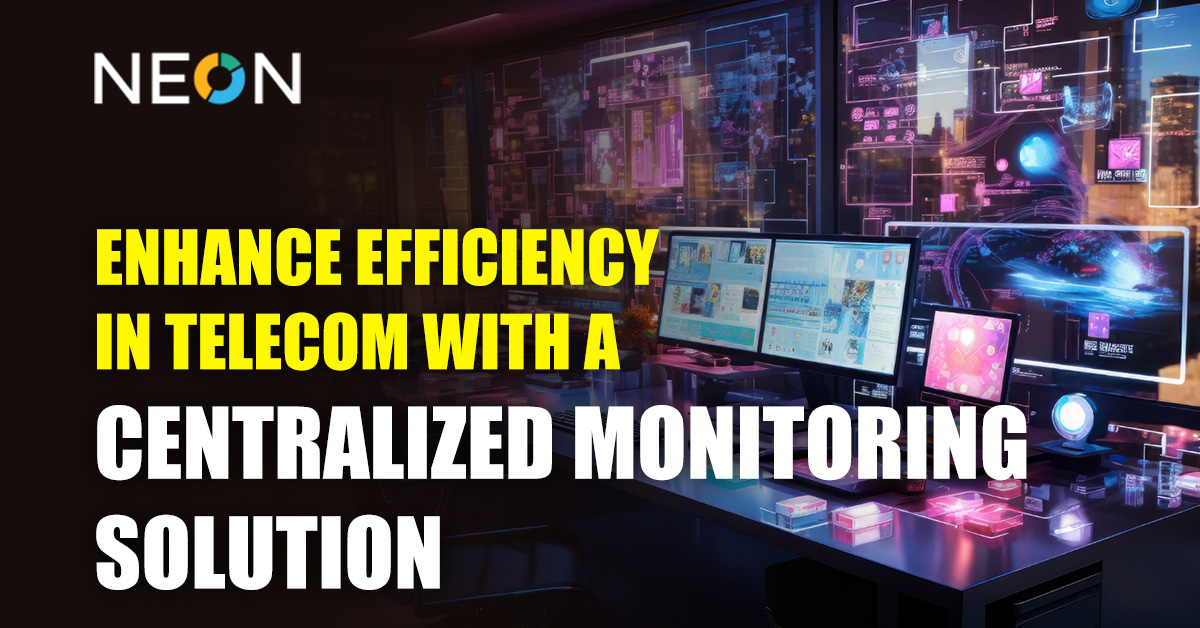In today’s fast-paced telecommunications landscape, efficiency isn’t just desirable—it’s essential. Imagine a solution that centralizes the monitoring of your telecom operations, offering real-time insights and proactive management capabilities. This is where a centralized monitoring solution steps in, revolutionizing how telecom companies operate.
By consolidating data from across your network into a single, accessible platform, this technology empowers you to detect and resolve issues swiftly, minimizing downtime and optimizing performance. Whether you’re overseeing a sprawling network or managing critical communications, this tool becomes your strategic advantage.
It not only enhances operational efficiency but also ensures seamless service delivery, meeting the ever-increasing demands of your customers. Dive into the future of telecom management with centralized monitoring—where every decision is informed, every action proactive, and every outcome optimized for success.
Understanding Centralized Monitoring Solutions
In today’s complex technological landscape, centralized monitoring solutions play a pivotal role in optimizing operations across various industries, including telecommunications. These systems are designed to consolidate and streamline the management of network infrastructures, providing real-time insights and proactive measures to enhance efficiency and reliability.
Their primary purpose is to gather, process, and analyze data from distributed sources such as servers, routers, switches, and other network devices. By centralizing this information into a unified interface, these solutions enable comprehensive oversight and control over the entire network infrastructure.
Key Components and Features
Real-time Data Collection
- Centralized monitoring systems continuously gather data from various network devices in real-time. This includes metrics such as bandwidth usage, traffic patterns, device status, and application performance.
- By collecting real-time data, these systems provide up-to-the-minute visibility into network operations, facilitating immediate response to potential issues or anomalies.
Network Performance Monitoring
- Effective monitoring of network performance is critical for maintaining optimal operations. Centralized monitoring system monitor key performance indicators (KPIs) such as latency, packet loss, throughput, and availability.
- Through comprehensive performance monitoring, organizations can identify trends, pinpoint bottlenecks, and optimize network resources to ensure consistent service delivery.
Incident Detection and Response
- One of the core functionalities of centralized monitoring systems is their ability to detect and respond to network incidents promptly.
- Automated alerts and notifications notify administrators of potential issues, enabling them to initiate proactive measures before these issues escalate and impact service delivery.
- Incident response capabilities include troubleshooting tools, diagnostic features, and predefined escalation procedures to expedite resolution and minimize downtime.
Implementation Considerations for Centralized Monitoring Solutions
Implementing a centralized monitoring system in telecommunications requires careful planning and execution to ensure seamless integration and optimal functionality. Following is a detail of the steps required to implement a centralized monitoring system:
Steps to Implement a Centralized Monitoring Solution:
- Conduct a comprehensive assessment of your existing network infrastructure, including hardware, software, and network architecture.
- Identify current monitoring tools and systems in place, as well as areas where improvements are needed to support centralized monitoring.
- Choose centralized monitoring software and hardware solutions that align with your organization’s specific needs and goals.
- Consider factors such as scalability, compatibility with existing systems, real-time data processing capabilities, and support for diverse network environments.
- Provide training sessions and workshops to educate IT personnel and network administrators on the functionalities and operation of the centralized monitoring solution.
- Ensure that staff members understand how to interpret monitoring data, utilize troubleshooting tools, and effectively respond to network incidents.
- Establish clear onboarding procedures to facilitate a smooth transition to the new monitoring system and minimize disruption to ongoing operations.
By following these implementation considerations, telecom organizations can effectively deploy a centralized monitoring solution that enhances operational efficiency, improves network visibility, and enables proactive management of network resources.
Benefits of Implementing a Centralized Monitoring Solution
Implementing a centralized monitoring solution in telecommunications offers numerous benefits, revolutionizing how networks are managed and enhancing overall operational efficiency. A detail of this is as follows:
- Streamlined Management of Multiple Networks:
Centralized monitoring systems provide a unified platform to oversee multiple networks and devices from a single interface. This streamlines management tasks by eliminating the need for disparate monitoring tools and simplifies the process of monitoring and maintaining network health.
- Reduction in Downtime and Service Disruptions
By continuously monitoring network performance and identifying potential issues in real-time, centralized monitoring systems enable proactive intervention. Early detection of anomalies allows IT teams to address issues swiftly before they escalate into service disruptions, minimizing downtime and ensuring uninterrupted service delivery.
- Enhanced Resource Utilization
Centralized monitoring solutions provide insights into bandwidth usage, application performance, and resource utilization across the network. This visibility enables administrators to allocate resources more effectively, ensuring that critical applications receive the necessary bandwidth while optimizing overall network efficiency.
- Capacity Planning and Scalability
With detailed analytics and trend analysis capabilities, centralized monitoring solutions facilitate informed decision-making regarding capacity planning. Telecom operators can anticipate future network demands, scale resources accordingly, and proactively expand infrastructure to accommodate growth without compromising performance.
Conclusion
From streamlining network management across multiple platforms to enhancing resource allocation and scalability, the benefits are clear. Embracing centralized monitoring ensures that telecom operators can meet the growing demands of their customers with agility and precision.
As we navigate the complexities of modern telecom operations, centralized monitoring emerges not just as a tool, but as a strategic imperative. By integrating centralized monitoring, telecom organizations can transform challenges into opportunities, setting new standards of efficiency and reliability in the industry.
In the competitive telecom market, especially VoIP, a centralized monitoring solution like NEON SOFT can make a significant impact. NEON SOFT’s centralized monitoring simplifies data management, enhances operational efficiency, and leads to better resource utilization and improved business outcomes.
Visit Zarwi for helpful informational blogs.
